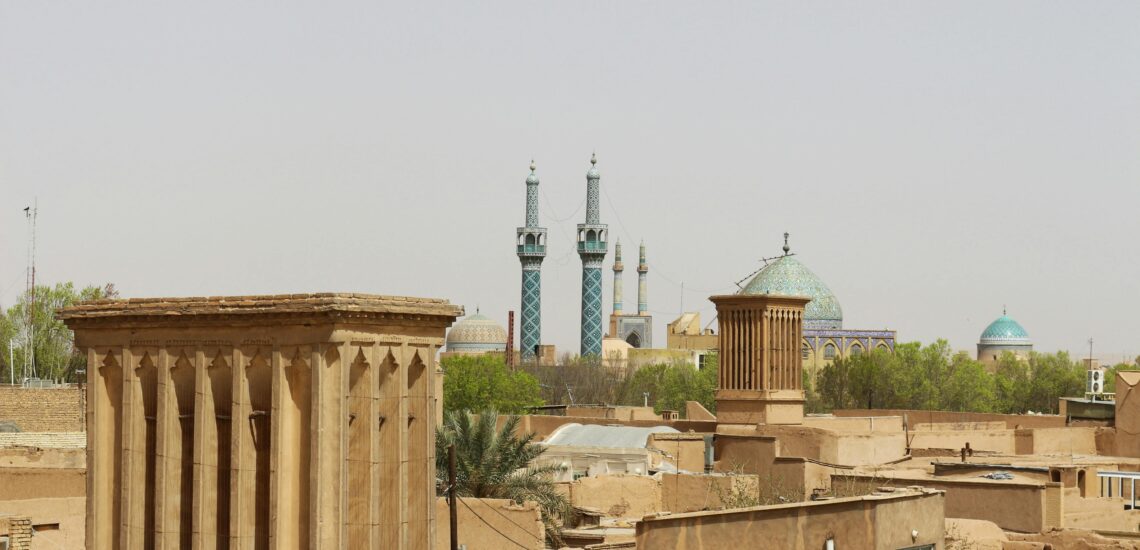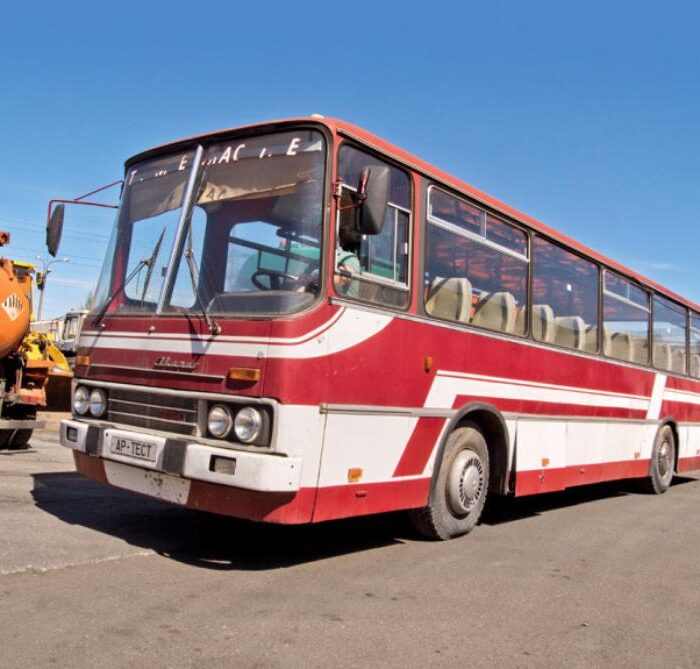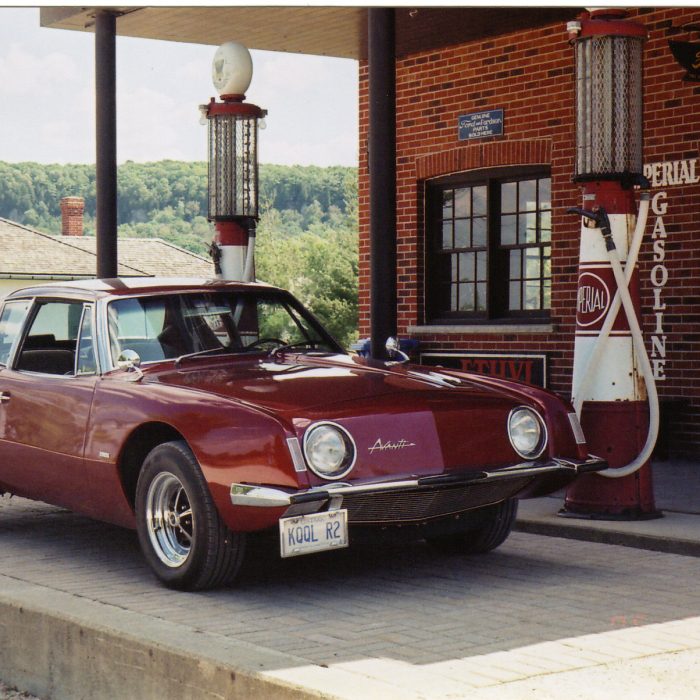Iran is a country with a rich history, breathtaking landscapes, and unmatched hospitality. As home to one of the world’s oldest civilizations, Iran boasts stunning Persian architecture, vast deserts, towering mountains, and vibrant cities that captivate visitors. Whether you’re interested in historical sites, natural wonders, or cultural experiences, Iran offers a unique and unforgettable journey.
Best Cities to Visit
Tehran
Tehran, the vibrant heart of Iran, blends rich history with modern energy, offering a mix of palaces, museums, and bustling bazaars.
The UNESCO-listed Golestan Palace showcases stunning Qajar-era architecture, with ornate tilework, mirrored halls, and lush gardens. History lovers can explore the National Museum of Iran, home to thousands of artifacts from Persian antiquity to Islamic heritage. For breathtaking city views, the Milad Tower, one of the tallest towers in the world, provides a 360-degree panorama of Tehran. No visit is complete without wandering through the Grand Bazaar, where visitors can shop for spices, Persian carpets, and traditional handicrafts while experiencing the city’s lively atmosphere.
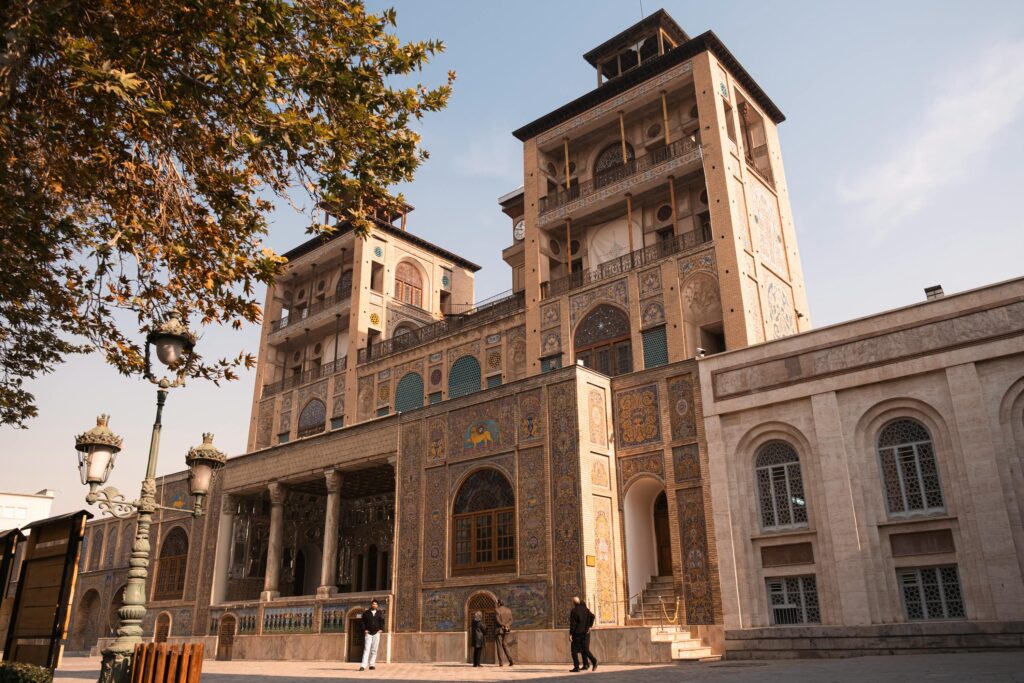
Isfahan
Famed for its stunning architecture and rich history, Isfahan is one of Iran’s most breathtaking cities, often referred to as “Half the World.”
At its heart lies Naqsh-e Jahan Square, a UNESCO-listed masterpiece surrounded by some of Persia’s greatest landmarks. The Shah Mosque and Sheikh Lotfollah Mosque showcase exquisite Persian tilework, while the Ali Qapu Palace offers panoramic views of the square. The Si-o-se-pol Bridge, with its 33 arches, is a striking symbol of Isfahan, beautifully illuminated at night. Meanwhile, the Jameh Mosque of Isfahan, one of the oldest mosques in Iran, highlights centuries of Islamic architectural evolution.
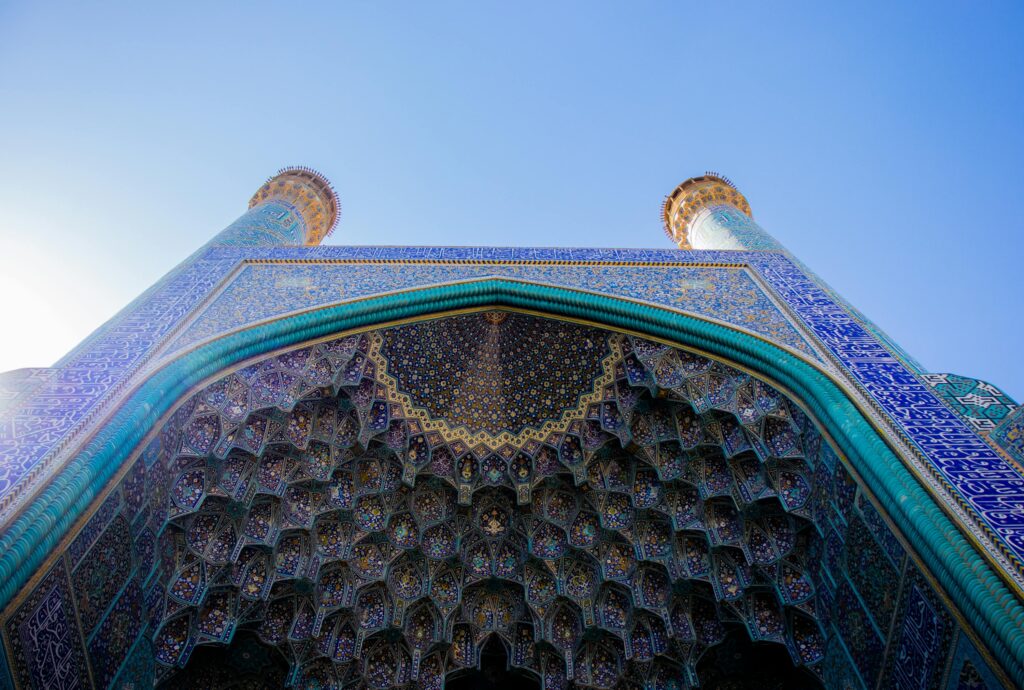
Shiraz
Renowned for its literary heritage, lush gardens, and ancient history, Shiraz is one of Iran’s most enchanting cities.
Just outside the city, Persepolis, the majestic ruins of the ancient Persian Empire, showcases grand columns, intricate carvings, and royal palaces from 2,500 years ago. In the heart of Shiraz, the Tomb of Hafez pays tribute to Iran’s most beloved poet, where visitors recite poetry in a peaceful garden setting. The Nasir al-Mulk Mosque (Pink Mosque) stuns with its vibrant stained-glass windows, creating a kaleidoscope of colors in the morning light. For nature lovers, Eram Garden, a UNESCO-listed Persian garden, offers exotic flora, cypress trees, and elegant pavilions, capturing the beauty of traditional Persian landscape design.
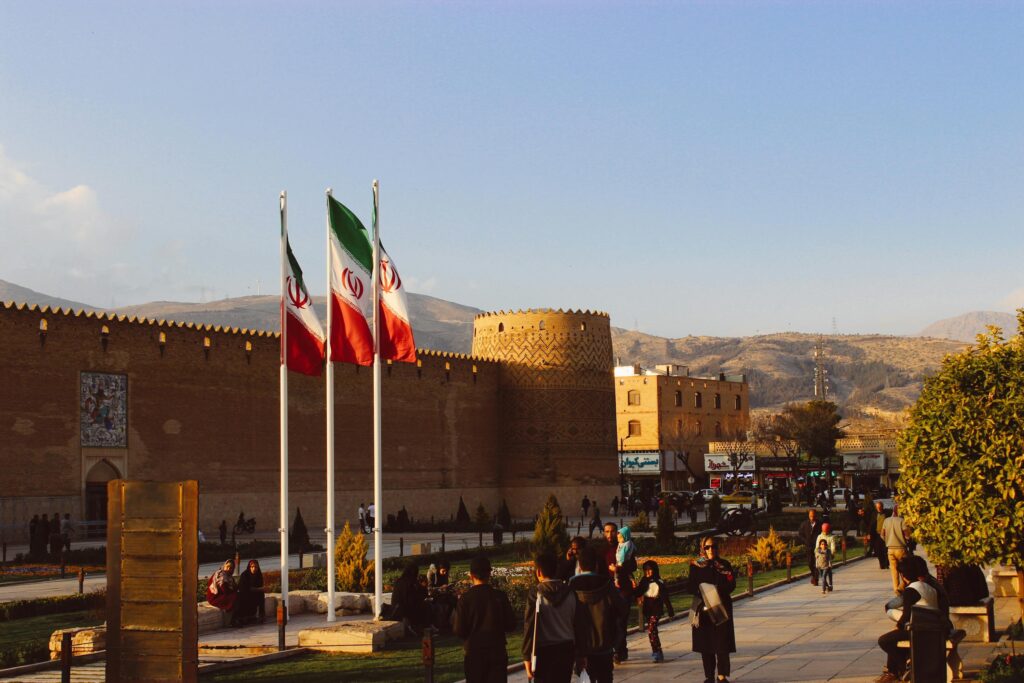
Yazd
A UNESCO-listed gem, Yazd is famous for its mud-brick architecture, wind towers (badgirs), and deep-rooted Zoroastrian heritage, making it one of Iran’s most unique destinations.
The Amir Chakhmaq Complex dominates the city center with its impressive facade and rows of symmetrical arches, especially stunning at sunset. The Jameh Mosque of Yazd, with its towering minarets and intricate blue tilework, stands as a masterpiece of Persian-Islamic architecture. The Zoroastrian Fire Temple houses a sacred flame that has been burning for over 1,500 years, offering insight into Iran’s ancient spiritual traditions. For a tranquil escape, Dowlat Abad Garden, a UNESCO-listed Persian garden, is home to one of the world’s tallest wind towers, demonstrating Yazd’s innovative desert cooling techniques.
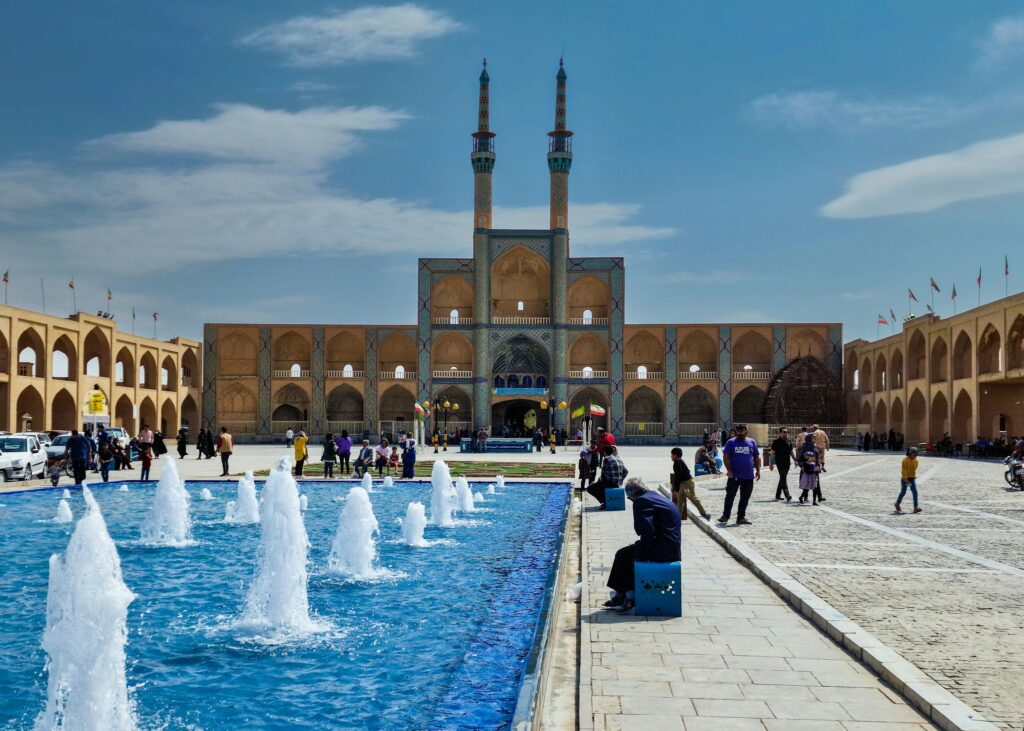
Tabriz
As one of Iran’s oldest cities, Tabriz boasts a rich trading heritage, stunning architecture, and cultural significance.
The Tabriz Historic Bazaar Complex, a UNESCO-listed site, is one of the largest and oldest covered markets in the world, featuring intricate brickwork, domed halls, and bustling trade in carpets, spices, and handicrafts. The Blue Mosque, also known as “Gök Masjid,” is famous for its striking turquoise tilework and elegant Persian calligraphy, standing as a testament to 15th-century architectural mastery. For relaxation, El Goli Park offers a serene lake with a grand pavilion, surrounded by lush gardens, making it a popular retreat for both locals and visitors.
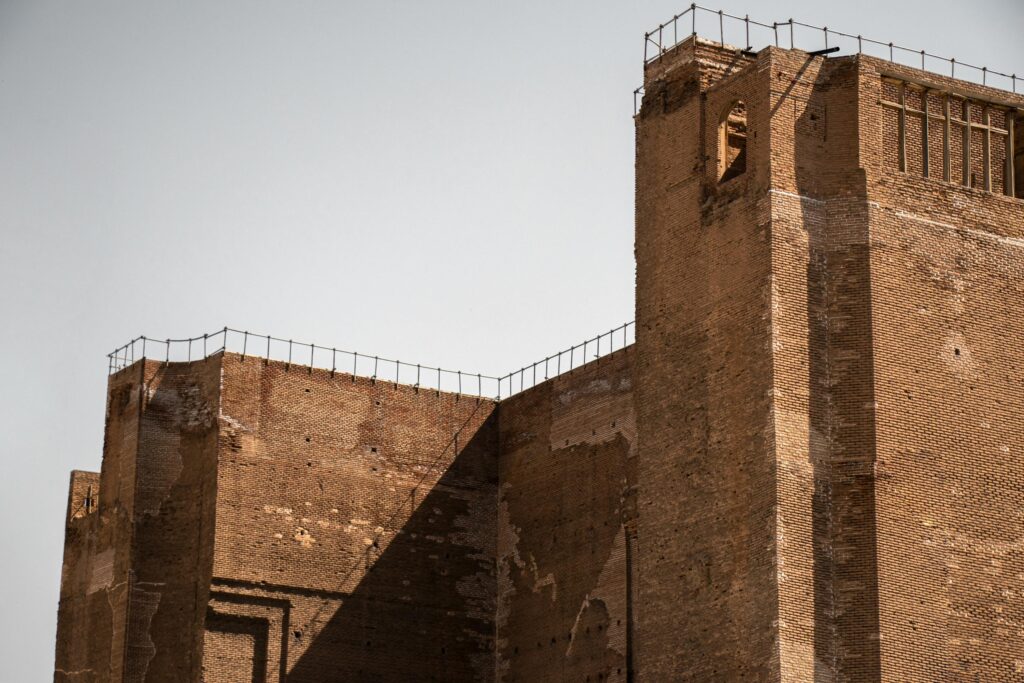
Mashhad
As Iran’s holiest city, Mashhad is a major pilgrimage site and a center of Persian literary heritage.
The Imam Reza Shrine, the largest mosque complex in the world, attracts millions of pilgrims with its golden domes, intricate tilework, and sacred courtyards, making it one of the most important religious sites in Islam. Just outside the city, the Tomb of Ferdowsi honors the legendary Persian poet, whose epic Shahnameh preserved Iran’s ancient mythology and history.
With its spiritual significance, grand architecture, and deep literary roots, Mashhad is a must-visit for both pilgrims and cultural enthusiasts.
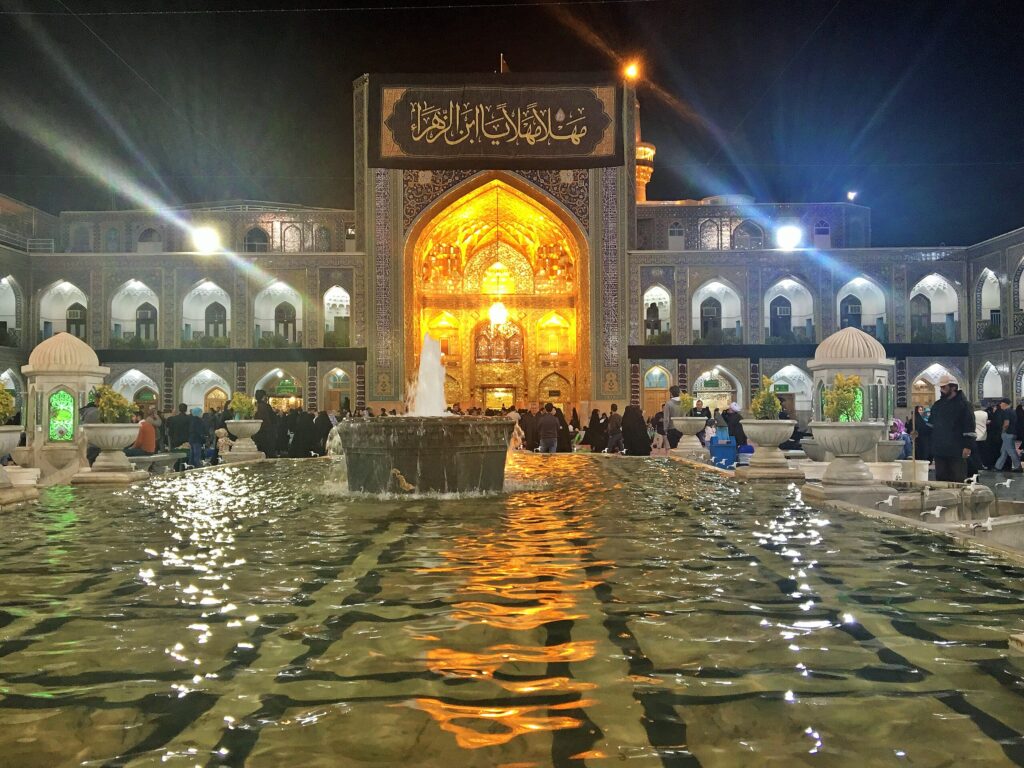
Best Natural Wonders
Dasht-e Kavir & Lut Desert
Iran’s two great deserts, Dasht-e Kavir and Lut Desert, offer breathtaking sand dunes, salt flats, and surreal rock formations, making them some of the most stunning landscapes in the world.
The Dasht-e Kavir (Great Salt Desert) is known for its vast salt plains, rugged mountains, and oases, while the Lut Desert (Dasht-e Lut) holds the record as one of the hottest places on Earth. The Kaluts of Lut, unique wind-carved rock formations, create a martian-like scenery, especially at sunrise and sunset. Adventurers can experience desert safaris, camel trekking, and stargazing, making these deserts a must-visit for nature lovers and thrill-seekers.
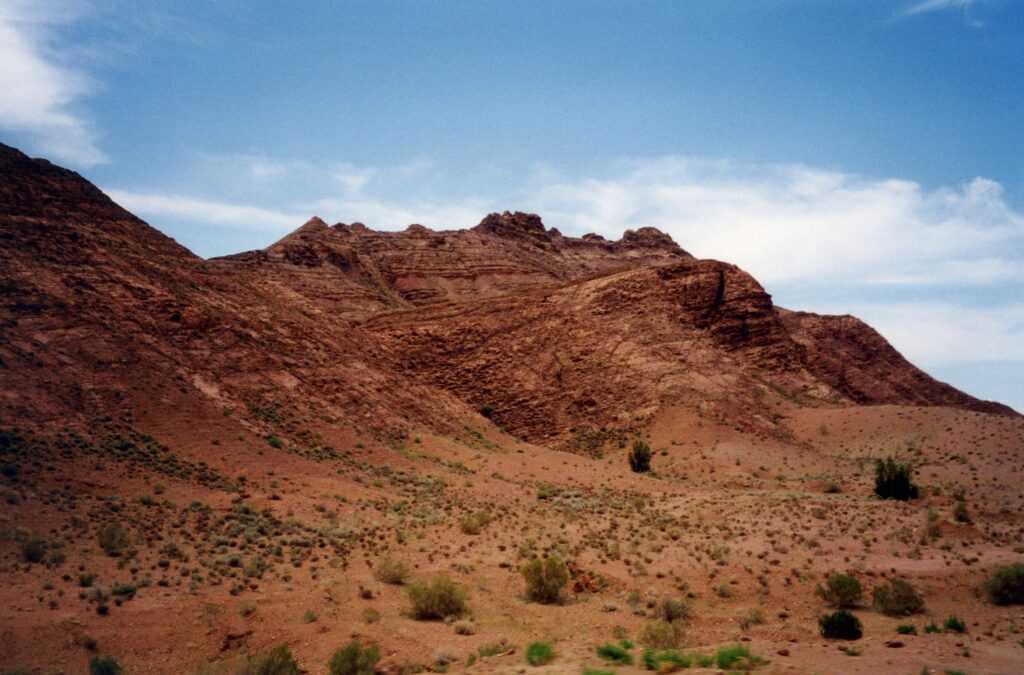
Caspian Sea Coast
Iran’s Caspian Sea Coast is a striking contrast to the country’s arid landscapes, featuring lush forests, scenic beaches, and charming coastal resorts.
The region is home to Mazandaran, Gilan, and Golestan provinces, where visitors can enjoy sandy shores, hiking through dense Hyrcanian forests, and relaxing in seaside towns like Ramsar and Bandar Anzali. The Alborz Mountains rise dramatically behind the coast, offering breathtaking cable car rides and trekking opportunities. With its mild climate, fresh seafood, and serene landscapes, the Caspian Coast is a perfect destination for nature lovers and those seeking a peaceful retreat.

Alamut Valley
Nestled in the Alborz Mountains, Alamut Valley is renowned for its dramatic landscapes and historical intrigue. The highlight is the Alamut Castle, the legendary stronghold of the Assassins, a secretive medieval order. Perched atop a steep cliff, the castle ruins offer breathtaking views of rugged peaks, deep gorges, and winding rivers. The valley is also a paradise for hiking, nature photography, and history enthusiasts, making it one of Iran’s most fascinating and scenic destinations.
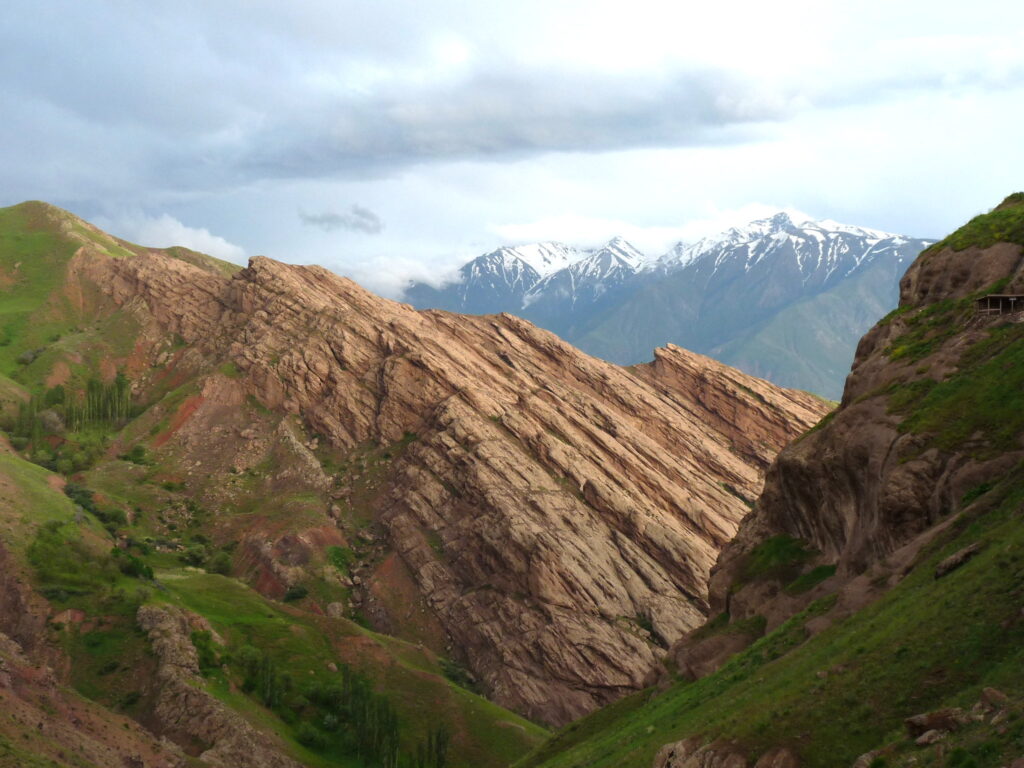
Badab-e Surt
Badab-e Surt is a stunning natural phenomenon, featuring vibrant travertine terraces formed by mineral-rich springs over thousands of years. Located in Mazandaran Province, these cascading pools change color depending on the sunlight and mineral concentration, ranging from orange and red to yellow and white. The site offers a breathtaking landscape, especially at sunrise and sunset, making it a must-visit for nature lovers and photographers seeking one of Iran’s most unique geological formations.
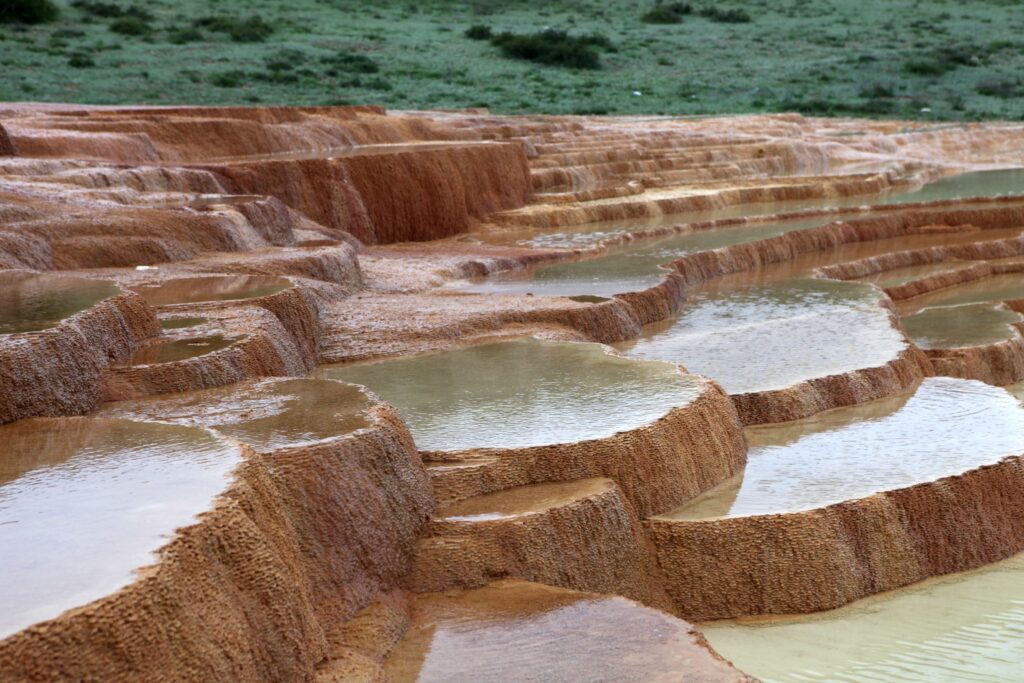
Mount Damavand
Standing at 5,671 meters, Mount Damavand is the highest peak in the Middle East and an iconic volcanic mountain in Iran. Known for its snow-capped summit, fumaroles, and stunning alpine scenery, it is a top destination for trekking and mountaineering. The climb varies in difficulty, with routes suitable for both experienced climbers and adventurous hikers. Offering panoramic views, hot springs, and rich Persian mythology, Damavand is a must-visit for outdoor enthusiasts and a symbol of Iran’s natural beauty.
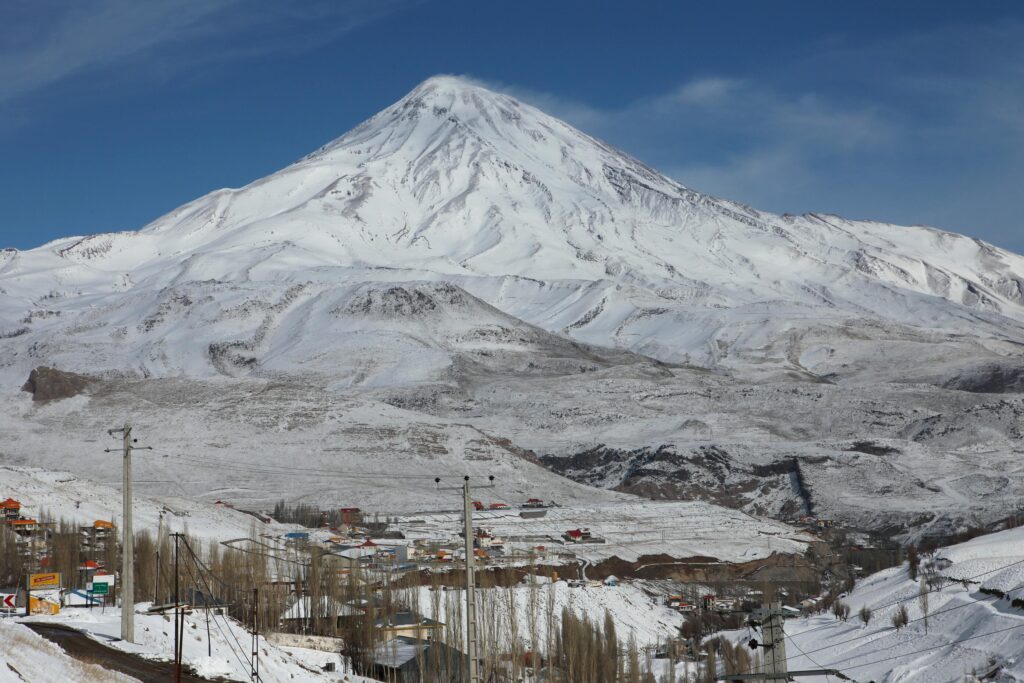
Hormuz Island
Known as the “Rainbow Island,” Hormuz Island is a surreal destination featuring multicolored mountains, salt caves, and pristine beaches. The island’s Martian-like landscapes are highlighted by the Red Beach, where the sand is tinted by iron-rich minerals, and the Rainbow Valley, with its vibrant hills of red, yellow, and purple hues. Visitors can explore the Salt Goddess Cave, take boat tours along the coast, and experience the island’s unique culture and seafood cuisine. A true natural wonder, Hormuz Island is a must-visit for adventure seekers and nature lovers.

Hidden Gems of Iran
Meymand Village
A UNESCO-listed site, Meymand Village is a 3,000-year-old cave village where residents still live in rock-carved dwellings. Located in Kerman Province, this ancient settlement features hand-dug cave homes, believed to be among the earliest human habitations in Iran. The village offers a unique glimpse into traditional semi-nomadic life, with locals preserving centuries-old customs and farming practices. Visiting Meymand is like stepping back in time, making it a must-see destination for those fascinated by history, anthropology, and off-the-beaten-path experiences.
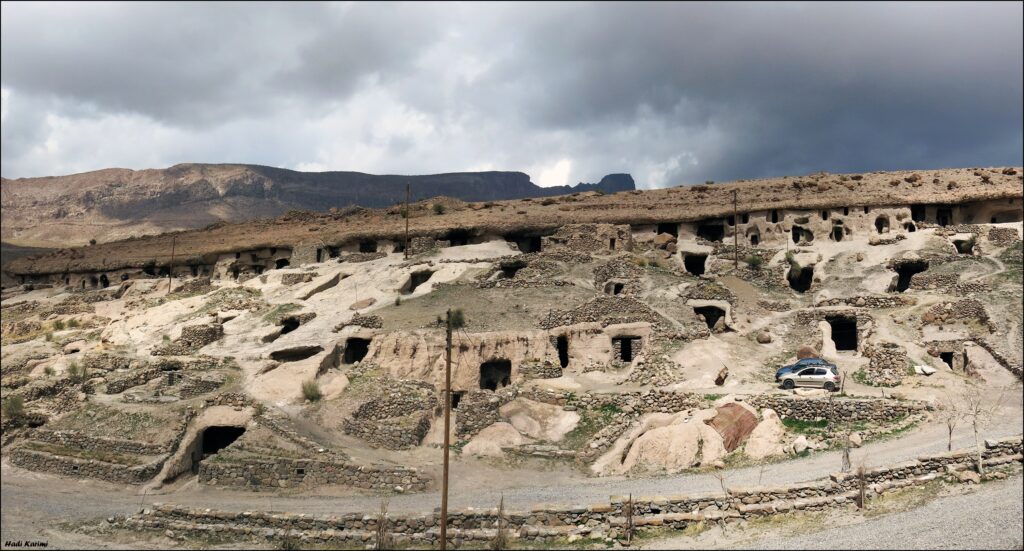
Kandovan
Often called Iran’s Cappadocia, Kandovan is a unique troglodyte village where homes are carved into volcanic rock formations. Located in East Azerbaijan Province, this centuries-old settlement is still inhabited, with locals living in cone-shaped rock dwellings that offer natural insulation against extreme temperatures. Visitors can explore cave homes, visit small handicraft shops, and enjoy the region’s famous honey. With its breathtaking scenery and ancient way of life, Kandovan is a must-visit for those seeking extraordinary landscapes and cultural heritage.
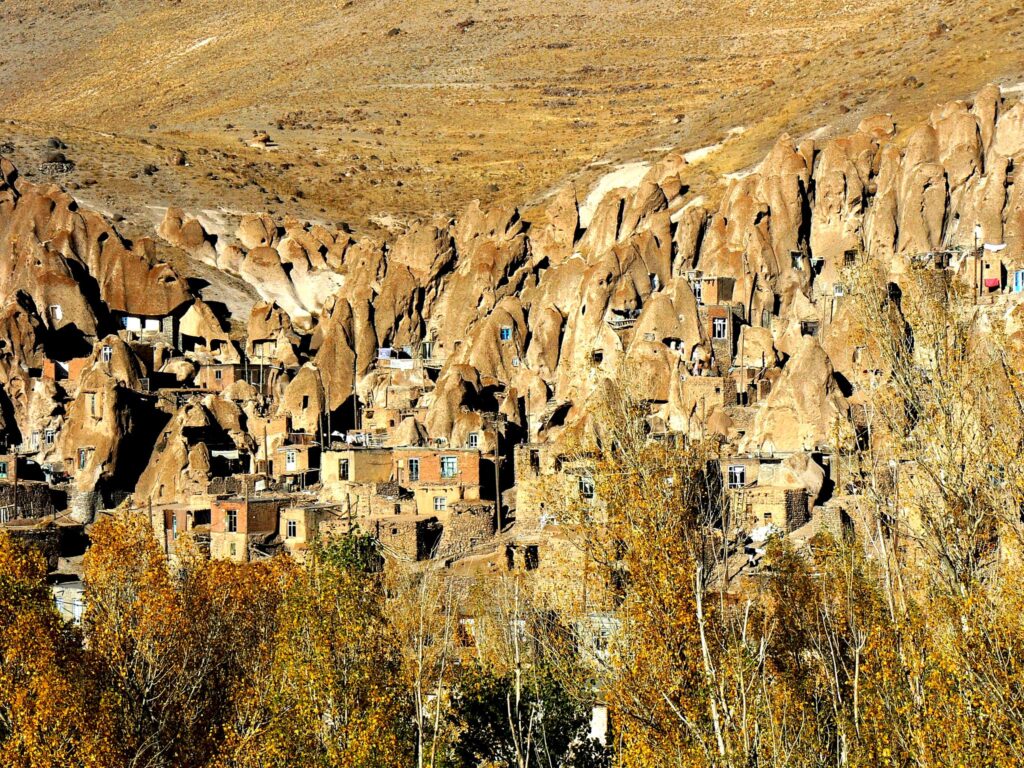
Qeshm Island
The largest island in the Persian Gulf, Qeshm Island is a paradise of dramatic rock formations, lush mangroves, and pristine beaches. The island’s star attractions include the Valley of the Stars, where wind-carved sandstone formations create an otherworldly landscape, and the Hara Mangrove Forest, a unique ecosystem home to migratory birds and marine life. Visitors can also explore the Chahkooh Canyon, with its towering rock walls, and relax on the island’s secluded beaches. Offering a blend of adventure, geology, and tranquility, Qeshm Island is a must-visit for nature lovers and explorers.
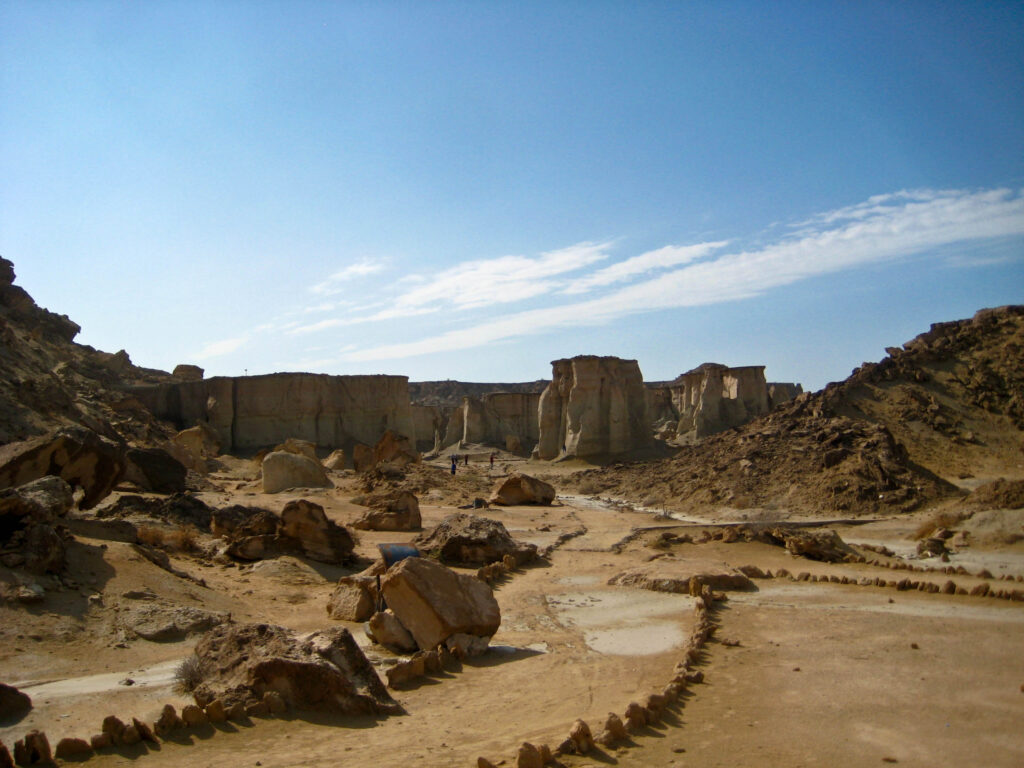
Masuleh
Nestled in the lush mountains of Gilan Province, Masuleh is a picturesque village where houses are built on steep terraces, with the rooftops of one home serving as the courtyard for the house above. This unique architecture, adapted to the mountainous terrain, creates a stunning hillside settlement covered in mist. Visitors can wander through its narrow alleys, explore local bazaars, and enjoy breathtaking views of the surrounding forests. With its traditional charm, cool climate, and scenic beauty, Masuleh is a must-visit for those seeking Iran’s most enchanting villages.
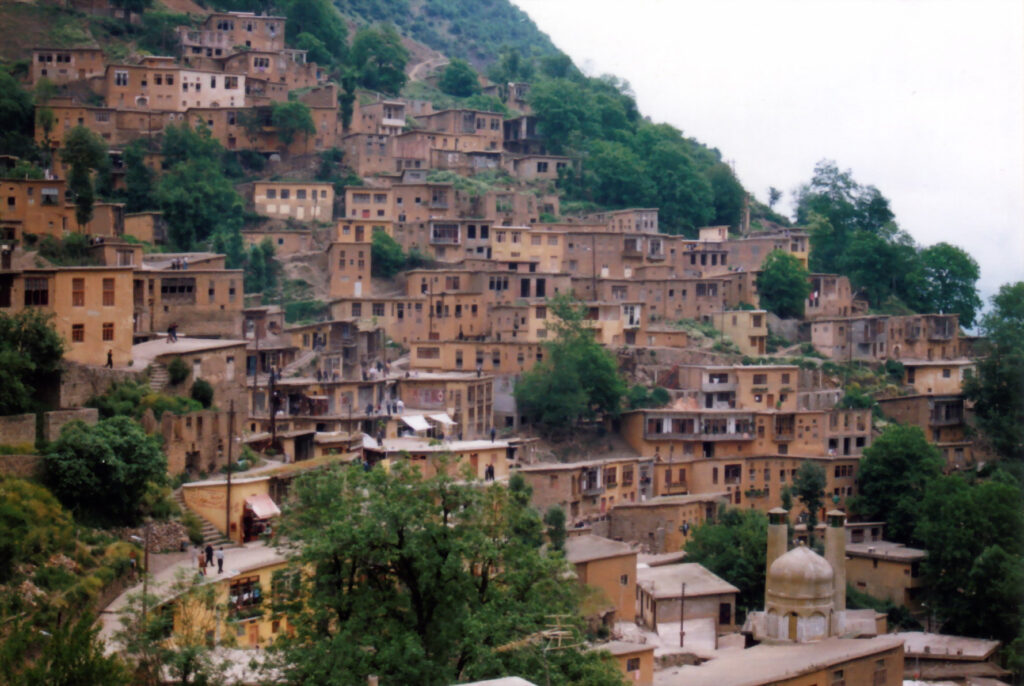
Rudkhan Castle
ucked deep within the lush forests of Gilan Province, Rudkhan Castle is a majestic medieval fortress dating back to the Sassanid era. This well-preserved stronghold, perched on a mountaintop, features 1,000 stone steps leading to its massive walls and watchtowers, offering breathtaking panoramic views of the surrounding jungle. The serene misty atmosphere and rich history make it a must-visit for history buffs, nature lovers, and adventure seekers exploring northern Iran.
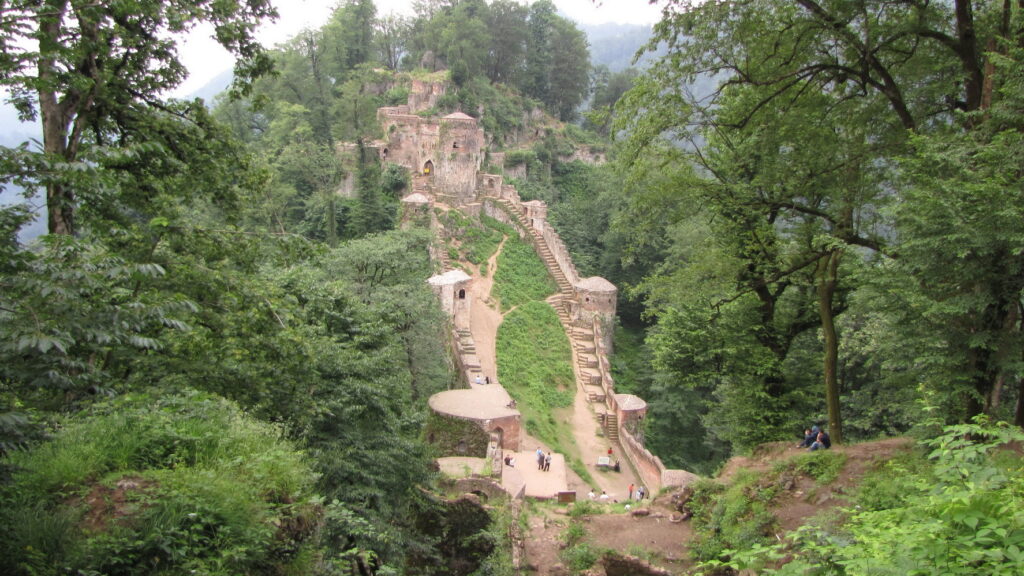
Best Cultural & Historical Landmarks
Persepolis
A UNESCO World Heritage Site, Persepolis was the ceremonial capital of the Achaemenid Empire, built by Darius the Great in the 6th century BC. This grand archaeological site features towering columns, intricately carved reliefs, and imposing staircases, showcasing the empire’s wealth and artistry. Highlights include the Gate of All Nations, the Apadana Palace, and the Tomb of Xerxes, each offering a glimpse into Persia’s ancient glory. As one of the most significant historical sites in the world, Persepolis is a must-visit for history lovers and cultural explorers.
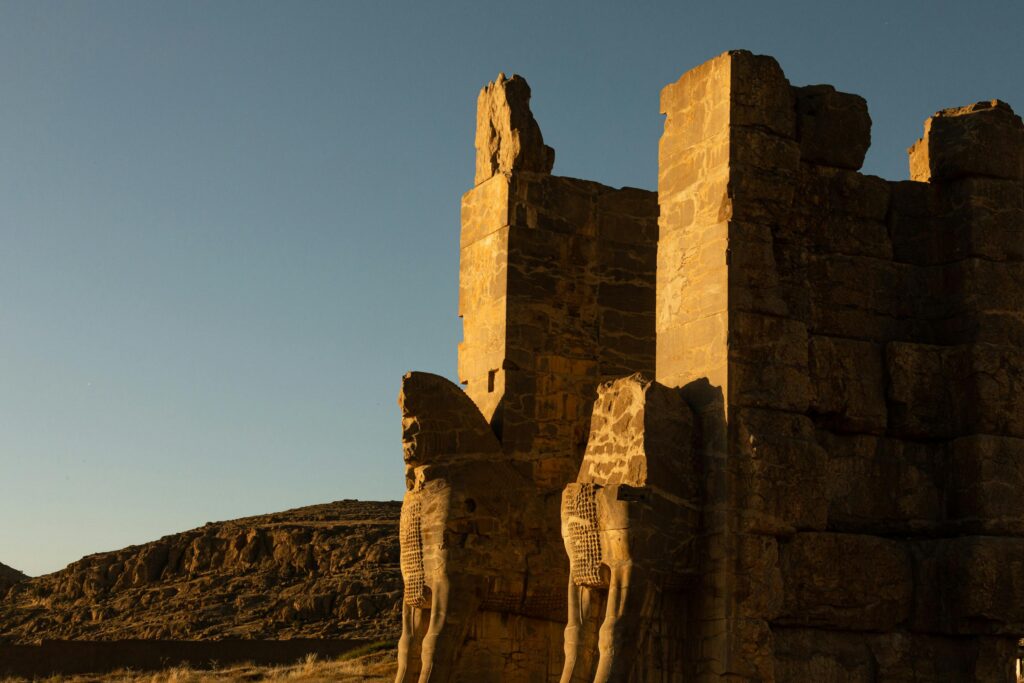
Naqsh-e Jahan Square
A UNESCO World Heritage Site, Naqsh-e Jahan Square is one of the largest and most breathtaking plazas in the world, built during the Safavid era in the 17th century. Surrounded by architectural masterpieces, the square features the Shah Mosque, known for its stunning blue tilework, the Sheikh Lotfollah Mosque, with its intricate dome and unique lighting effects, and the Ali Qapu Palace, offering panoramic views of the square. The Grand Bazaar of Isfahan, located nearby, adds to the square’s lively atmosphere. A must-visit for history, architecture, and culture lovers, Naqsh-e Jahan Square is the heart of Isfahan’s beauty and grandeur.
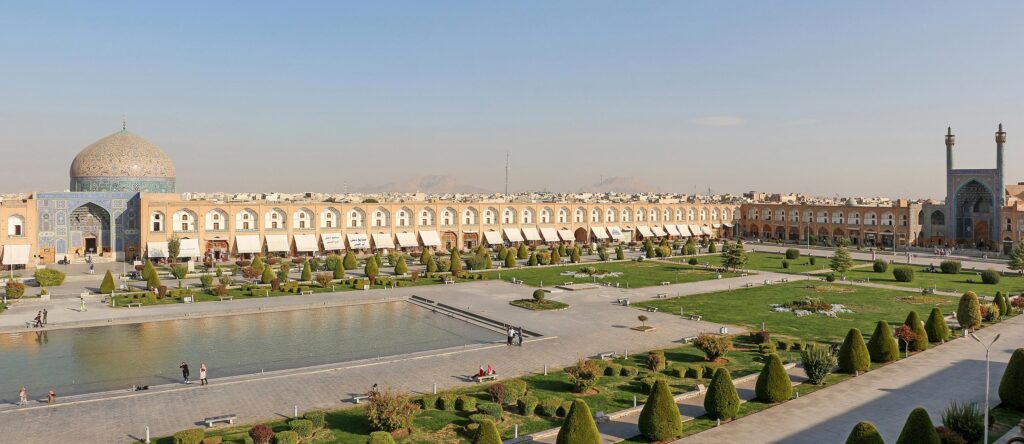
Tomb of Cyrus the Great
Located in Pasargadae, a UNESCO World Heritage Site, the Tomb of Cyrus the Great is the final resting place of the legendary founder of the Achaemenid Empire. This simple yet majestic stone structure, dating back to the 6th century BC, reflects the timeless legacy of Cyrus, known for his progressive rule and the Cyrus Cylinder, one of the first declarations of human rights. Surrounded by the ruins of the ancient Persian capital, the site is a must-visit for history lovers and those seeking a deeper connection to Iran’s imperial past.
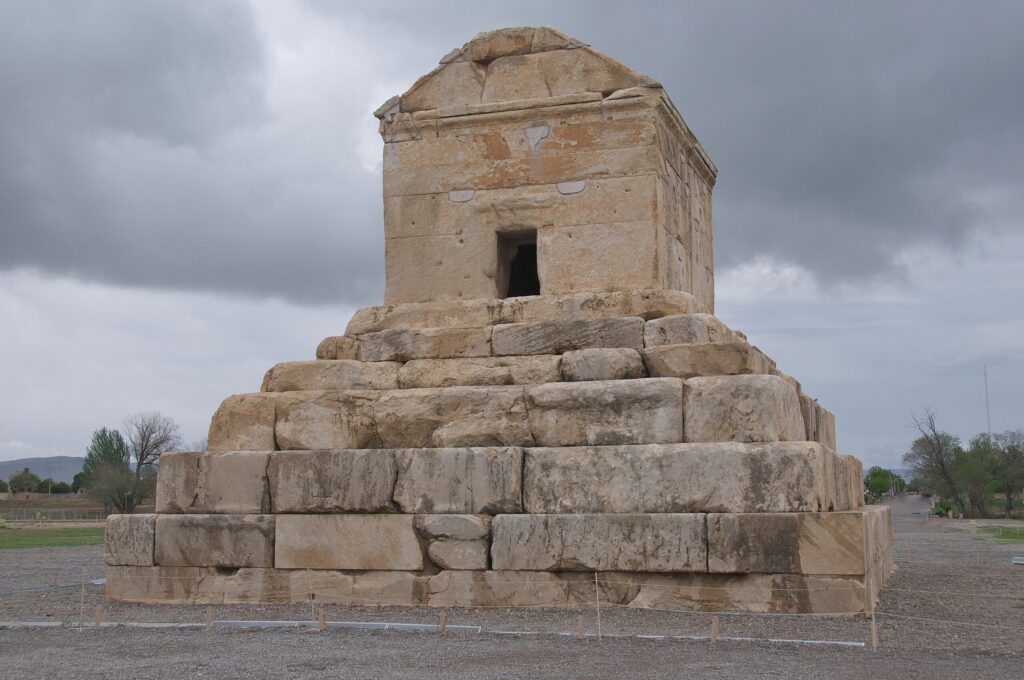
Shah Cheragh
One of the most breathtaking religious sites in Iran, Shah Cheragh in Shiraz is famous for its dazzling mirrored interior that reflects light in a mesmerizing display. This sacred shrine, which houses the tombs of Ahmad and Muhammad, brothers of Imam Reza, is a major pilgrimage site and a masterpiece of Persian-Islamic architecture. The intricate tilework, glowing chandeliers, and serene courtyards create a spiritually uplifting atmosphere, making it a must-visit for both pilgrims and travelers.
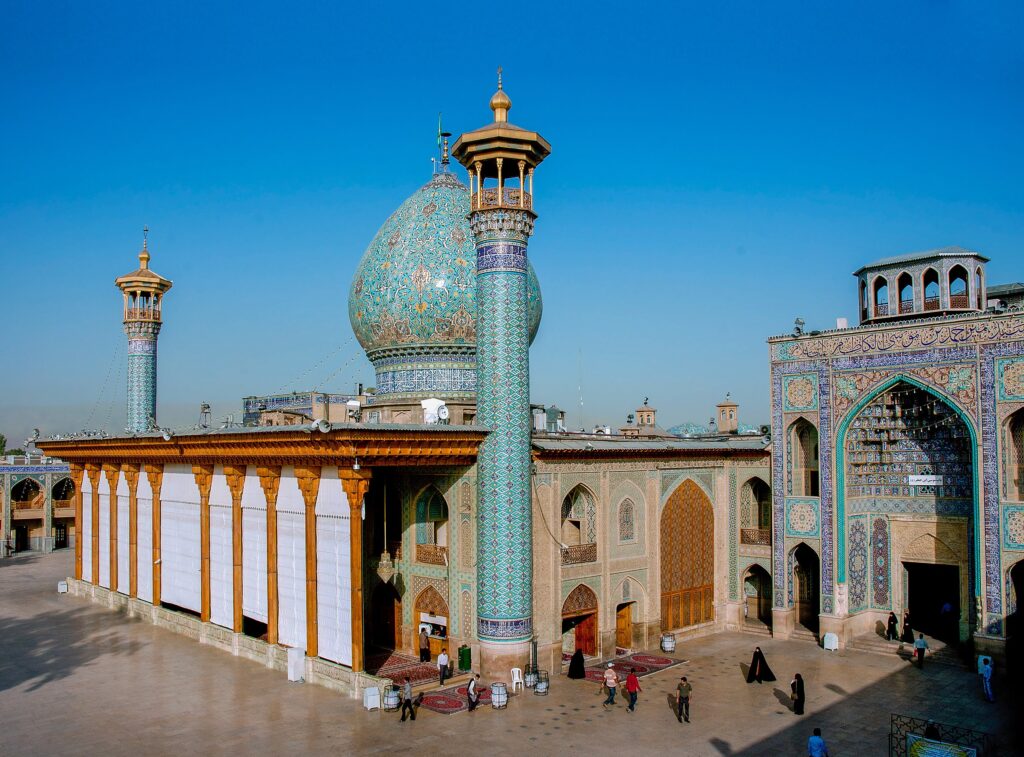
Best Culinary & Tea Experiences
Iranian Dishes to Try
Iranian cuisine is known for its rich flavors, aromatic spices, and centuries-old culinary traditions. Here are some must-try dishes that showcase the depth and diversity of Persian cooking:
- Fesenjan – A luxurious stew made with pomegranate molasses and ground walnuts, often served with chicken or duck. This dish balances sweet and sour flavors, making it a unique and beloved Persian delicacy.
- Kebabs – A staple of Iranian cuisine, kebabs come in various styles, from Kabab Koobideh (minced meat skewers) to Joojeh Kabab (saffron-marinated chicken). They are usually served with saffron-infused rice and grilled tomatoes.
- Ghormeh Sabzi – A flavorful herb stew featuring slow-cooked beef or lamb, kidney beans, and dried limes. The combination of fresh herbs like parsley, cilantro, and fenugreek gives this dish its distinct aroma.
- Tahdig – A crispy, golden layer of rice that forms at the bottom of the pot, considered a prized part of any Persian meal. It can be plain or flavored with saffron, yogurt, or even thinly sliced potatoes.
Persian Sweets
Iranian desserts highlight fragrant ingredients like saffron, rosewater, and pistachios. Here are a few iconic treats to satisfy your sweet tooth:
- Saffron Ice Cream (Bastani Sonnati) – A traditional Persian ice cream flavored with saffron, rosewater, and pistachios, often enjoyed with crunchy wafer cookies.
- Gaz – A soft Persian nougat infused with pistachios, almonds, and rosewater. It’s a famous sweet originating from the city of Isfahan.
- Baklava – A syrup-soaked pastry layered with nuts and infused with rosewater or cardamom, offering a rich and delicate sweetness.
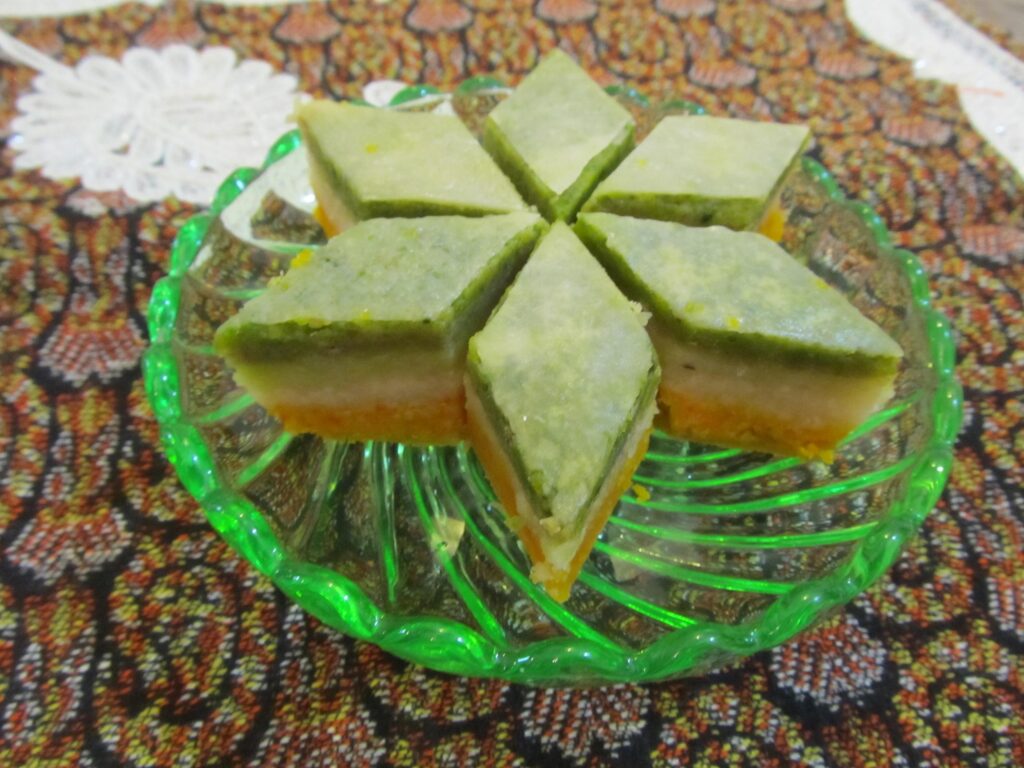
Traditional Tea Culture
Tea holds a special place in Iranian culture, symbolizing hospitality, relaxation, and social connection. Persian tea houses (chaikhanes) are a central part of daily life, where people gather to enjoy a warm cup of tea and engage in conversation.
- The Tea Itself:
Persian tea is typically a strong black tea, brewed in a samovar to maintain its warmth throughout the day. The tea is often served in small, delicate glasses that allow drinkers to appreciate its rich amber color. - Sweet Accompaniments:
A signature element of Persian tea culture is nabat—crystallized saffron-infused rock candy. Rather than adding sugar directly to the tea, many Iranians place a piece of nabat on their tongue and sip the tea through it, subtly sweetening each sip. - Tea House Experience:
Traditional chaikhanes are decorated with Persian carpets, cushions, and intricate tilework, creating a cozy and inviting atmosphere. Many also serve light snacks, Persian sweets, and even hookah (ghalyan) to complement the tea experience.
Travel Tips for Visiting Iran
Best Time to Visit
- Spring (March–May): Ideal for sightseeing and outdoor activities.
- Autumn (September–November): Perfect for cultural tours and city visits.
- Summer (June–August): Best for mountain regions and the Caspian Sea coast.
- Winter (December–February): Ideal for skiing in Dizin and Tochal.
Visa & Entry Requirements
- Most nationalities require a visa; visa-on-arrival is available for some.
- Travel insurance is mandatory for entry.
Driving and Car Rental Tips
Renting a car in Iran can be a convenient way to explore the country’s diverse landscapes, from bustling cities to remote villages. However, it’s important to be aware of local driving conditions and regulations before setting out.
Car Rental and Requirements
- Recommended Rental Agencies – Major cities like Tehran, Isfahan, and Shiraz have reputable car rental agencies, including both local companies and international brands. Booking in advance is recommended, especially if you require an English-speaking service.
- International Driving Permit – An IDP is required for most foreign drivers. Ensure you obtain one before arriving, as it may be requested by both rental companies and traffic authorities.
Driving Conditions
- City Traffic – Traffic in major cities like Tehran can be chaotic, with heavy congestion, aggressive driving habits, and unpredictable lane changes. Defensive driving and heightened awareness are essential.
- Rural Roads – While highways are generally well-maintained, rural and mountainous roads can be rough, with occasional potholes or lack of clear signage. Driving cautiously is advised, especially in remote areas.
- Iran has some of the cheapest fuel prices in the world, making road trips an economical way to explore the country. However, be mindful that fuel rationing and subsidies apply to locals, and foreign tourists may encounter different pricing structures at certain stations.
Iran is a land of history, culture, and stunning landscapes. Whether exploring ancient ruins, tasting Persian cuisine, or experiencing the warmth of local hospitality, Iran promises a memorable journey.
Final tip: Learn a few Persian phrases and immerse yourself in the rich culture for a truly rewarding experience!

Published March 02, 2025 • 14m to read

